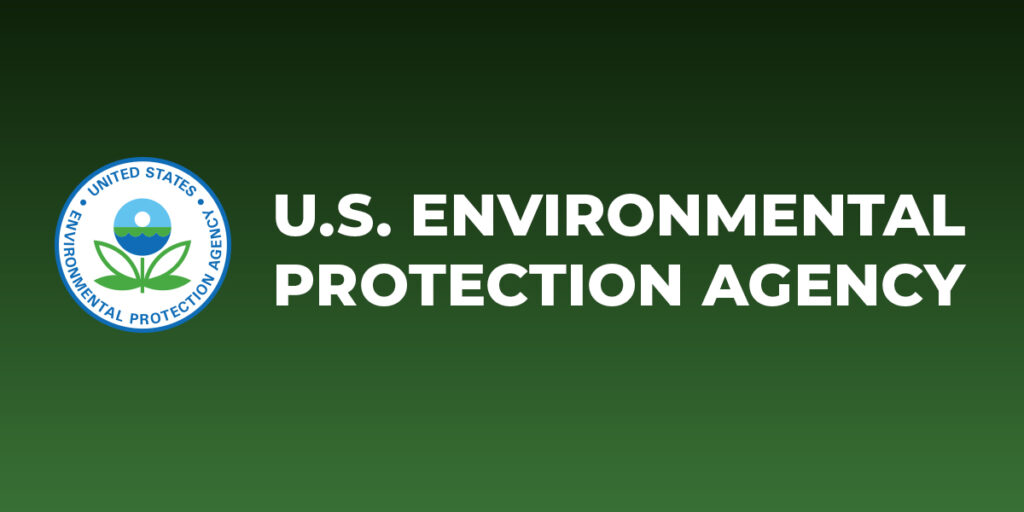 (AGENPARL) - Roma, 14 Novembre 2024
(AGENPARL) - Roma, 14 Novembre 2024(AGENPARL) – gio 14 novembre 2024 Issued: Nov 14, 2024 (12:00pm EST)
If you wish to unsubscribe please do so
here: http://url6130.epa.mediaroom.com/ls/click?upn=u001.iqz6hAvLdUl-2FaSixKUG3iyFJBsxNAroAZOQ1BID8fKIiLAUfJX2sQlhu1tzKAOIu-2BU84uzAzSpWvmWyHnsNJDRYXWx5dlMz75Zp9ch-2BQlG6mQHPYjReZhS13hvd5qOopXsyI_-2B0Ok6Af7hyz7Kqg6CR74pYblAA1WjrUjKSJUAiv3NOub0DC4O7JPWGxIlQ7kBB-2FSVjQtvIS-2FWnQntYm-2FpKDV6KUOlKtCsxBH4-2FzCA8uRpH5WvxpvXrDFZ9hALTFK3oRcOupH7UZjzBkmH8tgTjwbJIZCf3jsBsteU1y1RlgAg3ZVyyxmYKlofkD0v2U8W-2BXs6OVNf5PA8lsPRJPpFg3NhLnIspLl2KoQxjS0b9Co5bM-2Fy4-2B3PE0QhS32IlRthf25
EPA Issues Advance Notice of Proposed Rulemaking to Protect Salmon from
Chemical Used in Rubber Products
EPA advances process under Toxic Substances Control Act in response to Tribal
petition
WASHINGTON – Today, Nov. 14, the U.S. Environmental Protection Agency is
issuing an advance notice of proposed rulemaking (ANPRM) under Section 6 of
the Toxic Substances Control Act (TSCA) to gather information on the potential
risks associated with N-(1,3-Dimethylbutyl)-N?-phenyl-p-phenylenediamine
(6PPD) and its transformation product, 6PPD-quinone. In August 2023, the Yurok
Tribe, the Port Gamble S’Klallam Tribe and the Puyallup Tribe of Indians
submitted a petition under TSCA Section 21 asking EPA to establish regulations
(pdf) under TSCA Section 6 prohibiting the manufacturing, processing, use and
distribution of 6PPD in tires. EPA granted this petition in November 2023 and
committed to publishing an ANPRM by Fall 2024 in order to gather more
information that could be used to inform a subsequent regulatory action.
“Today, we’re following through on the commitment we made to our Tribal
partners to gather more information about this chemical used in rubber
products to help protect coho salmon,” said Assistant Administrator for the
Office of Chemical Safety and Pollution Prevention Michal Freedhoff.
“We’ll use the information we get on the health and environmental risks to
determine next steps to protect people and the planet.”
“Toxic stormwater runoff is one of the biggest threats facing Puget Sound
salmon recovery,” said Rep. Derek Kilmer (WA-06). “I am grateful that the
EPA has been responsive to the petition filed by Tribes from across our region
who are helping to lead the effort to better understand how 6PPD and
6PPD-quinone get into our waterways, how they impact our environment and our
health, and how we can get these chemicals out of local ecosystems. We have an
obligation to protect salmon in the Pacific Northwest in order to honor the
federal government’s trust and treaty responsibilities to Tribes in the
region. I am excited that the EPA is moving forward with this rulemaking as an
important step toward salmon recovery.”
“Salmon are a keystone species and research shows that the 6PPD-Q chemical
which runs off from vehicle tires into our waterways is lethal to their
survival, and our marine ecosystem,” said Rep. Marilyn Strickland
(WA-10). “As co-chair of the Puget Sound Recovery Caucus, I have secured
funding to find solutions to this problem, and the U.S. EPA is taking an
important step forward to help us.”
The chemical 6PPD has been used in motor vehicle tires for more than six
decades to make them more durable. It can also be found in other rubber
products such as footwear, synthetic turf infill and playgrounds. 6PPD reacts
with ozone pollution in the air to form a transformation product called
6PPD-quinone, which may be present in stormwater runoff from parking lots and
streets due to the presence of tire wear particles. Runoff may be washed into
streams and other bodies of water during rain events. As a result, aquatic
organisms can be exposed to 6PPD-quinone. Concentrations of 6PPD-quinone in
stormwater in the Pacific Northwest were found to be lethal to coho salmon
after only a few hours of exposure.
EPA is issuing an ANPRM to solicit information on the chemicals, including but
not limited to: environmental effects on aquatic and terrestrial ecosystems,
potential human health effects, environmental fate and transport, exposure
pathways, persistence and bioaccumulation, additional uses of 6PPD, and
releases from consumer products such as sneakers, playgrounds, rubber-modified
asphalt, reused tire or other rubber products. EPA is also seeking comment and
information related to alternatives to 6PPD, as well as potential chemical
transformation products associated with potential alternatives.
For example, there are data showing that 6PPD-quinone is toxic to fish, with
coho salmon being the most sensitive species studied to date. However, there
are still uncertainties about the potential impacts of 6PPD-quinone on human
health, as well as the potential for exposure from other sources of
6PPD-quinone.
EPA’s Work on 6PPD
It was EPA-funded research that first established the link between
6PPD-quinone and salmon deaths in the Puget Sound region in 2020. Since then,
EPA has been engaged in ongoing efforts with other federal agencies, states,
Tribes, industry and other stakeholders to address information gaps and
address concerns regarding the use of 6PPD and the risks of 6PPD-quinone.
EPA is continuing to fund research activities to expand its understanding of
the impacts of 6PPD-quinone, and to fill data gaps. For example, the Office of
Research and Development is continuing further investigation of 6PPD-quinone,
including work on fate and transport, ecotoxicity, and green infrastructure
solutions for stormwater contamination. The Office of Water developed a draft
analytical method for detection of 6PPD-quinone in surface and stormwater and
finalized screening values for 6PPD-quinone and 6PPD to protect sensitive
salmon and other aquatic life. The agency is also coordinating with the
National Science and Technology Council’s Joint Subcommittee on Environment,
Innovation and Public Health on potential cross-governmental research on human
health effects.
EPA proposed a rule in March 2024 under Section 8(d) of TSCA that would
require manufacturers (including importers) of 6PPD to report lists and copies
of unpublished health and safety studies on 6PPD and 6PPD-quinone to EPA. EPA
plans to finalize this rule by the end of 2024.
EPA has also developed a webpage on 6PPD and 6PPD-quinone to keep the public
and stakeholders updated as research progresses, alternatives are identified,
and ways to mitigate the effects of the chemicals on the environment are
implemented.
EPA will accept written comments on the ANPRM for 60 days following
publication via docket EPA-HQ-OPPT-2024-0403 at Regulations.gov.
Learn more and read the Advanced Notice of Proposed Rulemaking for 6PPD.
To unsubscribe or change your settings click here:
http://url6130.epa.mediaroom.com/ls/click?upn=u001.iqz6hAvLdUl-2FaSixKUG3iyFJBsxNAroAZOQ1BID8fKKhIILjisBDEktm3-2BIos9X6wKE2U2M-2BqFL66fVWNJa1nY-2FG-2B4vF12soFDtTthY07cQUNzZLA7hupYXqseTlZfUCzXcLrZyOOHml2Ot8bWfqBw-3D-3DelPK_-2B0Ok6Af7hyz7Kqg6CR74pYblAA1WjrUjKSJUAiv3NOub0DC4O7JPWGxIlQ7kBB-2FSVjQtvIS-2FWnQntYm-2FpKDV6KUOlKtCsxBH4-2FzCA8uRpH7kgwK-2F-2FQXrLOoo9UgU5eU-2BGR-2FNemswOtiy5FLqdNI2eT6HBNvvJl9O6CDpXKXozfX-2Fetk48V6yQSYAb4QKOJ-2F6nuN-2B7dYk7t5ej6D2nbOBVNxw67zvoZQBHdJN1rcjr4K9l0FTHRrp4IN6nXlrPN9V

